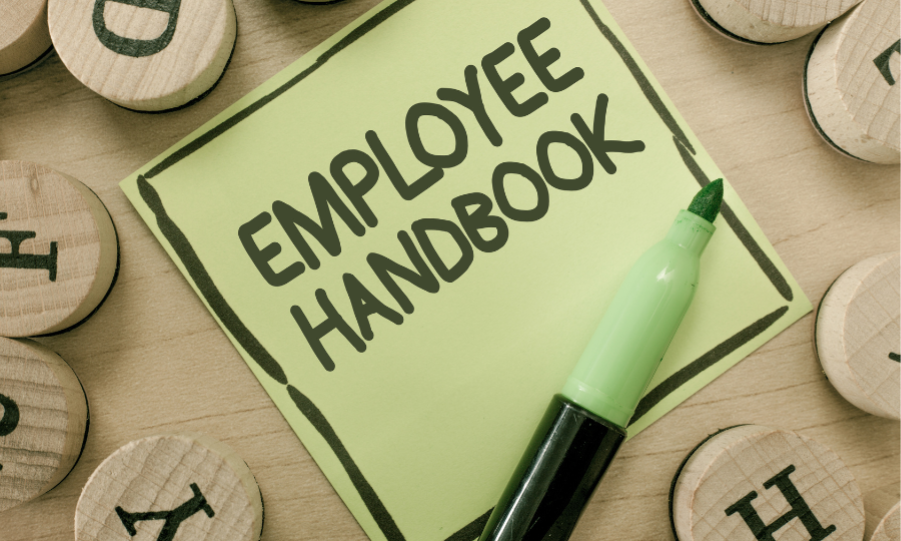Why Legal Compliance in Employee Handbooks Is Essential
In today’s evolving workplace landscape, maintaining employee handbook legal compliance is more than a formality—it’s a cornerstone of responsible business management. A compliant handbook communicates company expectations while protecting your organization against disputes and liabilities.
For many organizations, partnering with experienced HR solutions providers ensures every policy aligns with current employment regulations. An up-to-date handbook helps HR teams reinforce company culture, ensure fair treatment, and avoid exposure to costly claims.
If your company is reviewing or drafting its handbook, now is the ideal time to reach out to your HR compliance partner or contact us for guidance on policy alignment and audit readiness.
Why Employee Handbook Legal Compliance Matters
Your employee handbook serves as a binding communication tool that outlines both employer and employee rights. Non-compliance—whether from outdated labor law references or ambiguous policy wording—can expose your organization to unnecessary risks.
Legal Protection and Risk Mitigation
A properly structured handbook provides documented proof that your organization adheres to fair employment standards and communicates them effectively to staff. It becomes your first line of defense in audits, investigations, and disputes.
Reinforcing Company Culture
Beyond compliance, a clear handbook helps HR professionals shape workplace behavior, reinforce organizational values, and ensure consistent management practices across departments.
Staying Ahead of Labor Law Updates
Employment regulations change frequently. Maintaining compliance requires regular monitoring of both federal and state law updates to ensure every section—from wage policies to leave benefits—remains current.
Essential Legal Elements Every Handbook Must Include
A handbook’s strength lies in its precision. Every clause should align with local, state, and federal regulations. The following components are non-negotiable for employee handbook legal compliance:
1.Employment Classifications
Define exempt and non-exempt employees clearly to comply with wage and hour laws. Clarify full-time, part-time, temporary, and contract categories.
2.Equal Employment Opportunity
Include policies that demonstrate your company’s commitment to non-discrimination and equal opportunity. This section should reflect both EEOC standards and state-specific civil rights laws.
3.Workplace Conduct and Safety
Highlight expectations for professional behavior, anti-harassment protocols, and compliance with OSHA standards. Safety policies must address incident reporting and emergency procedures.
4.Wage, Leave, and Overtime Policies
Miscommunication around pay can lead to disputes. Include detailed guidelines for attendance, overtime, and paid leave. Many organizations consult a payroll management company to ensure accuracy in wage-related documentation and reporting.
5.Disciplinary Procedures
Outline steps for corrective action, ensuring transparency and consistency. A fair process reflects compliance and demonstrates commitment to due process.
Understanding Federal and State Labor Law Updates
HR teams must stay informed about evolving legal frameworks. Federal mandates—such as the FLSA, FMLA, and ADA—require precise reflection in every company’s handbook.
Why Continuous Monitoring Is Critical
Labor law updates can alter how leave accrues, how remote work is managed, and how disciplinary actions are handled. State regulations often expand upon federal protections, requiring dual compliance efforts.
Practical Compliance Approach
- Subscribe to reputable HR and legal update channels.
- Conduct a semi-annual review of all employee-facing materials.
- Update policies immediately following any legislative changes.
Conducting a Handbook Audit
Even well-drafted handbooks can become outdated. A structured handbook audit ensures every section meets current legal and operational standards.
Key Steps in an Audit
1. Compare existing policies with recent labor law updates.
2.Review all disciplinary, leave, and wage-related content for accuracy.
3.Consult legal or HR advisors to validate changes.
4.Confirm that the tone and terminology align with your organization’s HR communication standards.
Annual Review Cycle
Set a recurring annual audit schedule. HR leaders should assign internal checkpoints to verify both policy relevance and accessibility for employees.
Policy Examples That Strengthen Compliance
Adding specific, well-phrased policies enhances credibility and comprehension. Here are a few examples:
- Anti-Discrimination Policy: Defines prohibited behaviors and outlines reporting mechanisms.
- Harassment Prevention Policy: Specifies complaint procedures and consequences for violations.
- Social Media Policy: Clarifies boundaries between personal expression and company representation.
- Whistleblower Policy: Protects employees who report misconduct from retaliation.
Each example supports employee handbook legal compliance by establishing transparency and accountability.
Effective HR Communication Strategies
An employee handbook is only as strong as the communication strategy that supports it. HR communication bridges the gap between policy intent and employee understanding.
Delivering Clear Policy Updates
Regular briefings, email summaries, or training sessions ensure that updates reach every team member. Clarity reduces confusion and reinforces organizational consistency.
Accessibility and Inclusivity
Ensure the handbook is available digitally and in print. Employees should be able to locate relevant sections easily and understand policy terms without legal jargon.
Consistent Messaging
Align handbook language with HR communications such as memos, onboarding materials, and performance review templates.
Integrating the Handbook into Onboarding
An effective onboarding program introduces employees to company policies and compliance expectations from day one.
Embedding Compliance into Orientation
During orientation, highlight sections of the handbook that outline rights, responsibilities, and workplace conduct. Encourage new hires to ask questions for clarity.
Digital Onboarding Materials
Distributing digital copies ensures every employee acknowledges receipt. HR systems can track acknowledgments for compliance verification.
Ongoing Reinforcement
Follow-up reminders and refresher sessions help employees stay informed as policies evolve.
Maintaining Compliance Year-Round
Compliance isn’t a one-time project—it’s a continuous responsibility.
Quarterly Reviews
Set quarterly review dates to evaluate key policies and adjust for legal updates. Documentation of these reviews demonstrates diligence and accountability.
Version Control
Keep previous handbook versions archived to show a clear history of compliance evolution.
Collaborating with HR Experts
Partnering with experienced HR advisors helps your organization maintain precision and alignment. If your business offers or requires specialized support, explore solutions through your internal HR team or Pinkerton’s professional services.
How to Validate Your Handbook’s Legal Compliance
Step-by-Step Validation Process
1.Cross-check policies against federal and state laws.
2.Confirm clarity in language and tone—avoid ambiguity.
3.Validate that all company-specific practices (remote work, scheduling, benefits) align with documented policies.
4.Review acknowledgment procedures to ensure every employee confirms receipt.
5.Conduct annual or biannual reviews with HR or legal counsel.
Tools and Templates
Use structured checklists and digital tracking to simplify compliance monitoring. Ensure your HR team maintains both accessibility and accountability.
Conclusion: Protecting Your Business Through Proactive Compliance
A well-structured employee handbook reflects professionalism, responsibility, and foresight. Achieving employee handbook legal compliance ensures your organization operates transparently, mitigates risks, and upholds the highest standards of workplace fairness.
Whether you are updating existing policies or designing a new handbook, align every section with current legal requirements and company culture. By combining compliance with clarity, your handbook becomes an invaluable business asset.
To ensure your policies meet today’s standards, take the next step and contact us for professional HR guidance tailored to your organization’s needs.
Frequently Asked Questions (FAQs)
1. What is employee handbook legal compliance?
Employee handbook legal compliance means ensuring every policy, clause, and procedure within your handbook follows all current federal, state, and local employment laws. A compliant handbook protects your organization from disputes and promotes consistent, lawful HR practices across your workforce.
2. How often should an employee handbook be updated?
HR experts recommend reviewing and updating the employee handbook at least once a year. However, updates should also occur whenever there are significant labor law changes, company policy shifts, or organizational structure updates to maintain accuracy and compliance.
3. What policies are essential for legal compliance in a handbook?
Key policies include equal employment opportunity, workplace conduct, wage and hour compliance, leave management, anti-harassment, and safety regulations. These elements ensure the handbook aligns with current HR communication standards and supports both employer and employee rights.
4. Who should review the employee handbook for compliance?
The handbook should be reviewed by HR leaders, legal advisors, and compliance specialists. Partnering with professional HR solutions providers ensures that every section—from onboarding materials to disciplinary actions—meets legal requirements and industry best practices.
5. Why is an employee handbook audit important?
A regular handbook audit helps identify outdated or missing information, verify legal accuracy, and strengthen the handbook’s overall effectiveness. It demonstrates that the organization is proactive about compliance and is committed to maintaining transparent, up-to-date policies for its workforce.






